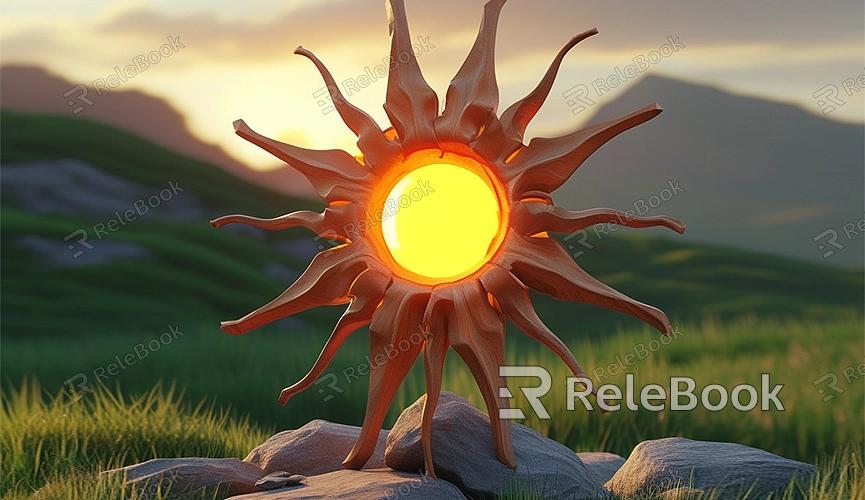How to make the sun in blender render
Creating a realistic sun in Blender can significantly enhance your 3D scene and improve your modeling and rendering skills. This guide will walk you through the process of creating a convincing sun model in Blender, including adding materials, lighting, and effects. Whether you are a beginner or an experienced user, these steps will help you achieve a high-quality sun effect.
1. Choose the Right Tools and Plugins
First, ensure you have Blender installed and are familiar with its basic operations. To save time during the creation process, you might consider using plugins like Node Wrangler, which can simplify managing material nodes.

2. Create the Basic Sun Model
The first step in creating the sun in Blender is to build a basic sphere model. Follow these steps:
- Open Blender: Start by opening Blender and deleting the default cube.
- Add a UV Sphere: Go to the top menu bar, select "Add" > "Mesh" > "UV Sphere."
- Scale the Sphere: Adjust the sphere's size to resemble a sun by pressing `S` to scale.
3. Add Material to the Sun
A realistic sun needs not just the right shape but also appropriate materials. Use the Shader Editor to create a convincing sun material.
1. Open the Shader Editor:
- Select your sun model.
- In the "Material Properties" panel on the right, click "New" to create a new material for the model.
- Switch to the "Shading" workspace and open the Shader Editor.
2. Add Emission Material:
- Delete the default "Principled BSDF" node and add an "Emission" node.
- Connect the output of the "Emission" node to the "Surface" input of the "Material Output" node.
- Adjust the "Emission" node’s color to yellow or orange and increase its strength to make the sun appear bright.
4. Add Details and Effects
To make the sun look more realistic, you can add details and effects such as surface textures and glow.
1. Add Noise Texture:
- In the Shader Editor, add a "Noise Texture" node and a "ColorRamp" node.
- Connect the output of the "Noise Texture" node to the input of the "ColorRamp" node, and then connect the "ColorRamp" output to the color input of the "Emission" node.
- Adjust the parameters of the "Noise Texture" and "ColorRamp" to create irregular spots and variations on the sun’s surface.
2. Add Glow Effect:
- Enable "Volume Scattering" in the Render Settings and add a "Volumetric" material to the entire scene.
- In the Shader Editor, configure the "Volumetric" material with suitable scattering color and density to create a halo effect around the sun.
5. Set Up Lighting and Rendering
To make the sun look more realistic, configure appropriate lighting and rendering settings.
- Add a Light Source: Place a "Point Light" or "Area Light" near the sun model. Adjust the light’s intensity and position to match the sun's emission effect.
- Set Background: In the "World" panel, adjust the background color to dark blue or black to simulate space.
- Enable Bloom Effect: In the "Render Settings," turn on the "Bloom" effect to make the sun appear brighter and more realistic.
6. Render and Post-Processing
After completing the above steps, render your scene and apply post-processing to achieve the best results.
1. Render Settings:
- Ensure you are using the "Cycles" render engine.
- Adjust sampling and ray tracing settings in the "Render Settings" to improve render quality.
2. Post-Processing:
- Use the "Compositing" workspace and add a "Glare" node to enhance the sun's halo.
- Adjust overall color with the "Color Balance" node to make the image look more harmonious.
If you need high-quality 3D textures, HDRIs, or downloadable 3D models for your projects, you can find them on Relebook. Simply download and import these resources into Blender for use in your scene. By following these steps, you can create a realistic sun model in Blender.

